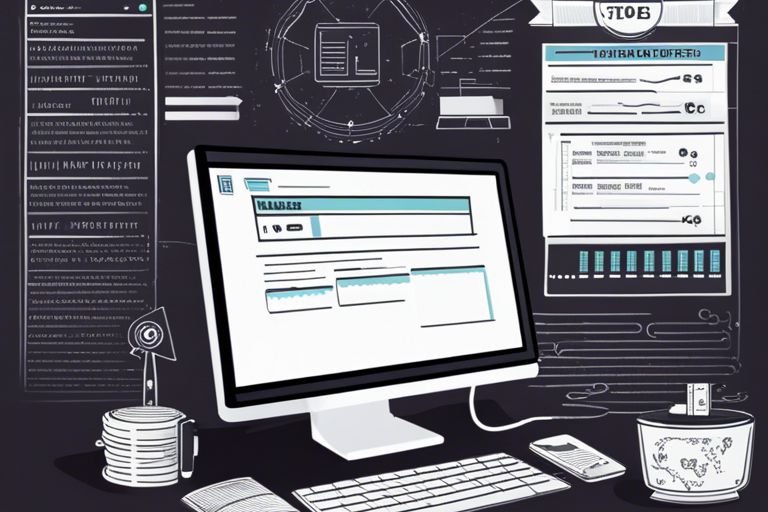Venturing into the inspiring realm of app development may feel intimidating, especially if you’re not well-versed in intricate coding languages. Still, with the “Building Apps Without Code: A Beginner’s Guide,” you don’t need to worry. This guide is specially curated to empower you to conceive, design, and launch your very own application using revolutionary no-code platforms. Whether you have a game-changing idea or want to streamline your workflow, this resource will help you unleash your inner developer and transform your dream app into reality. All without needing to write a single line of code. So be prepared to unlock your creativity and revolutionize your app development journey.
Understanding No-Code App Development
The journey to creating your very own app need not be an uphill climb filled with prerequisites of coding skills. Say hello to the exciting world of no-code app development – a fast-rising trend in the tech sphere that’s revolutionizing how applications are being built.
What is No-Code App Development?
No-code app development is a novel approach enabling you to build digital products without any prior coding knowledge. This graphical means of app development allows you to use drag-and-drop components, utilize automation, and employ other visual interfaces to develop your app – all without needing to understand or write complex lines of code.
Benefits of No-Code App Development
Imagine a world where you, yes you, regardless of your technical prowess, can create a fully functional app. Sounds exciting, doesn’t it? That’s exactly what no-code app development brings to the table – it democratizes app creation. It not only accelerates the app creation process but also significantly reduces costs since you don’t essentially require a team of expert coders. It fosters creativity and innovation by removing technical barriers.
Popular No-Code Platforms
The increasing demand for no-code app development has led to the sprouting of numerous platforms offering these services. Among the many, some popular players include Bubble, Adalo, OutSystems, Appgyver, and Glide. Each offers a unique user experience, and your choice of platform could be guided by factors like complexity of your app, pricing, among others.
Planning Your App
Mapping out your app is an essential step. Jumping right in the deep end without a clear plan could be both misleading and time-consuming.
Identify Your App’s Purpose and Target Audience
Every app solves a problem, either big or small. Therefore, being crystal clear about what your app is meant to do is crucial. Equally important is knowing who your target audience is. They are the reason why your app exists, and knowing who they are is key to tailoring an optimal user experience.
Determine App Features and Functionality
Once the purpose and target audience are determined, it’s time to discern what features your app will have. Will it support payments? Will it integrate with social media? Answering these questions will give shape to your app’s skeleton.
Create a Wireframe or Mockup
After juggling with the ideas and options, it’s finally time to start visualizing your app. Creating a wireframe or mockup provides you a basic structure and layout of your app. This step includes figuring out the navigation, main features, and overall user interfaces.

This image is property of images.unsplash.com.
Choosing the Right No-Code Platform
The right platform can enhance the efficiency, productivity, and aesthetic appeal of your app.
Research Available No-Code Platforms
Take your first step by meticulously researching available no-code platforms. Each platform has its unique selling points and drawbacks. Therefore, scrutinize each one according to your needs.
Consider Platform Features and Pricing
Drill down to the nitty-gritty of platform features and pricing. Some platforms may fit perfectly for a basic app while others might be more suited for complex applications. Matching your needs with the right platform is pivotal in creating a successful app.
Read Reviews and User Experiences
To further narrow down your choices, read online reviews and get feedback from users. These aids in getting a firsthand experience of how working on the platform may look and feel like. Remember, the ideal platform should be easy to use and must offer excellent customer support.
Building Your App
Having laid a strong foundation, it’s now time to start building your app using the selected no-code platform.
Setting Up Your No-Code Platform Account
Start by creating your account on the platform. Follow the registration process as directed on the platform, and secure your account by creating a strong password.
Exploring Platform’s App Building Interface
Next, familiarize yourself with the platform’s app building interface. Play around with the features, options, and tools available. You’ll grow more comfortable and efficient with the more time spent understanding the platform.
Designing App Layout and User Interface
Now that you’re familiar with the no-code app building platform, you can begin designing your app’s layout and user interface. Make sure to create a design that reflects your brand and is appealing to your target audience.

This image is property of images.unsplash.com.
Implementing Functionality
This part involves adding the features and functionality you previously outlined during your app planning process.
Adding and Customizing App Elements
Using your understanding of the platform and your wireframe, begin adding and customizing app elements such as buttons, menus, images, and text fields. Customize these elements to match your brand’s look and feel.
Configuring App Actions and Behaviors
After adding elements to your app, you’ll want them to perform certain actions. Configuring app actions and behaviors involves setting rules for elements to operate in response to different user interactions.
Integrating External Services and APIs
In case your app requires data from other sources or needs to interact with other services, you may need to integrate APIs. Some No-code platforms provide functionality for external integrations which can help enhance your app’s functionality.
Testing and Debugging
Once your app is built, it’s crucial to thoroughly test its functionality and usability before launching it to the public.
Performing Regular Testing on Different Devices
Regular testing allows you to find any possible pitfalls or malfunctioning elements before your users do. Conduct these tests on various devices to ensure your app offers a seamless experience across the board.
Identifying and Resolving Bugs and Issues
During testing, you’ll likely find some bugs or issues that you didn’t notice during development. This is your chance to fix these issues and perfect your app’s performance.
Gaining User Feedback and Making Improvements
Use beta testers to gain valuable feedback about your app. Their insights can recommend possible improvements and highlight any weaknesses you might have overlooked.

This image is property of images.unsplash.com.
Publishing Your App
Now comes a big moment – getting your app out into the world.
Preparing Your App for Publishing
Before publishing, ensure your app’s information, design, and functionality are all in place. This includes having an appealing app icon, captivating screenshots, and a compelling app description.
Creating App Store and Play Store Accounts
To publish your app on the App Store or Google Play Store, you’ll need to create developer accounts. Follow the guidelines provided by each platform to create these accounts.
Submitting Your App for Review
After ensuring everything’s in place, submit your app for review. Both the App Store and Google Play have guidelines that your app must adhere to. Ensure you meet these criteria before submitting.
Scaling and Updating Your App
Building an app never really ends at its launch. Post-publishing, you’ll need to monitor its performance and make necessary updates based on user feedback and analytics.
Monitoring App Performance and Analytics
Continued monitoring of your app’s performance is vital. Analyze how users interact with your app and draw insights on ways to improve.
Adding New Features and Functionality
Keep your app relevant by occasionally adding new features and functionality. This not only keeps users interested but also helps in acquiring new ones.
Optimizing App for Better User Experience
App optimization is crucial for user retention. From improving loading times to streamlining the registration process, focus on upgrading the user experience continually.

Promoting Your App
Success in the app market doesn’t only hinge on a great app; marketing is a significant part of the equation.
Creating a Marketing Plan for Your App
A well-laid-out marketing plan can help get your app in front of the right audience. Draft a strategy that outlines how you will promote your app.
Utilizing Social Media and Online Channels
Leveraging social media and other online channels can significantly boost your app’s visibility. Create engaging content and target ads to your potential app users.
Engaging with Users and Encouraging Reviews
Encourage users to provide reviews of your app. Positive reviews can significantly improve your app’s reputation and attract more users.
Continuing Your Learning Journey
The world of no-code is continually evolving, and so should your knowledge.
Exploring Advanced No-Code Techniques and Features
Stay inquisitive and explore more advanced aspects of no-code app development. This could involve mastering new platform tools or learning about complex integrations.
Joining No-Code Communities and Forums
No-code communities and forums are springboards for gaining more knowledge about no-code app development. They offer a platform for discussion, guidance, and collaboration amongst like-minded folk.
Attending No-Code Workshops and Events
Participate in workshops and events dedicated to no-code development. Such events are treasure troves of insights and networking opportunities, aiding in growing your expertise.
In conclusion, the process of app development has never been more accessible. With the advent of no-code platforms, it’s time you unleashed your ideas and creativity – and remember, the journey is as fulfilling as the destination. Happy app-building!








Leave a Reply